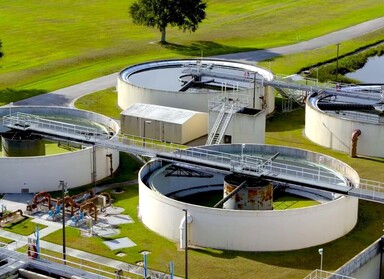Nitrogen
EOSi’s MicroC® products were originally developed to help wastewater treatment systems remove nitrogen.
DENITRIFICATION
Protecting Environmental Resources by Supporting Biological Nitrogen Removal
Biological nutrients such as nitrogen and phosphorus are essential for the growth of all living organisms, but excessive amounts of nutrients released to the environment by human activities can harm ecosystems and impact human health. Excess nitrogen deteriorating water quality in many freshwater bodies worldwide is causing drinking water contamination, oxygen-depleted waterways, habitat damage, algal blooms, and fish kills.
Nitrogen in drinking water also poses health risks to infants and pregnant women, particularly in agricultural areas where groundwater wells are the primary source of drinking water. Elevated concentrations of nitrogen in drinking water create nitrate compounds causing “blue baby syndrome” methemoglobinemia, a potentially fatal illness in which the nitrates reduce the oxygen-carrying capacity of the blood.

Excess nitrogen from wastewater discharges can fuel harmful algal blooms in natural water bodies. EOSi’s MicroC® products support enhanced denitrification processes, helping treatment facilities reduce nitrogen levels and protect aquatic ecosystems.
How EOSi Can Help
EOSi’s MicroC® products are uniquely suited for use in biological processes that help remove nitrogen from wastewater. With wastewater treatment plants increasingly required by state and federal regulatory agencies to reduce the amount of nitrogen discharged into sensitive watersheds, EOSi offers services that help customers assess, develop, implement, and update their compliance strategy for nitrogen removal programs.
MicroC serves as a carbon source to support biological nitrogen removal (BNR) using denitrification to convert nitrates in the wastewater into harmless water, nitrogen gas (N2), and carbon dioxide gas (CO2). A biological process that takes place under anoxic conditions, denitrification occurs after aerobic bacteria converts ammonia to nitrate in a nitrification process. Often there is insufficient organic material to support denitrification, therefore a carbon source such as MicroC is added to the process to convert nitrate to nitrogen gas.
Take Better Control of Your Biological Nutrient Removal Processes.


